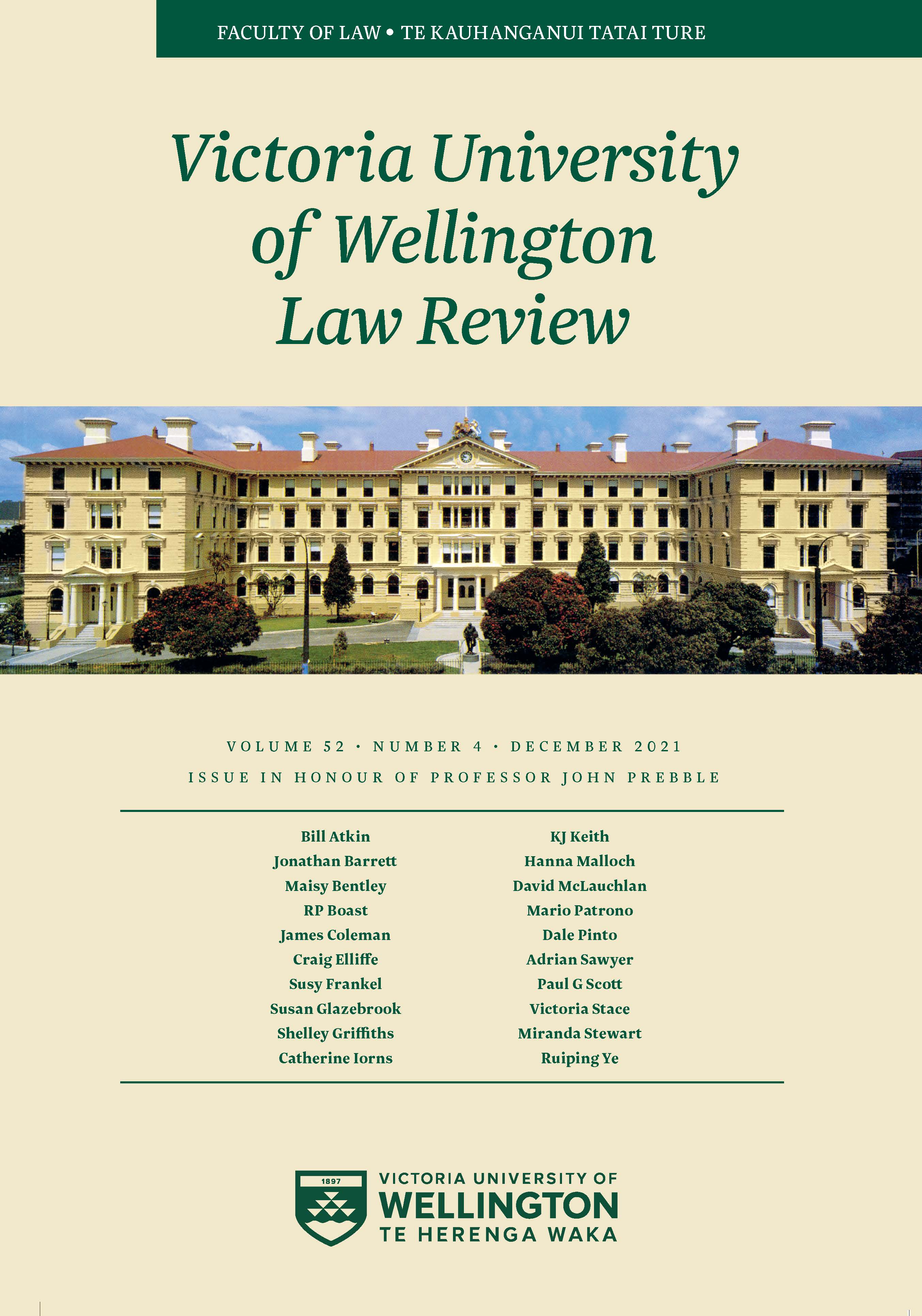Dissonance between Fact and Law: The Example of Visual Artistic Practice and Income Tax Concessions for Peak Copyright
DOI:
https://doi.org/10.26686/vuwlr.v52i4.7400Abstract
The principal income tax statutes of both New Zealand and Australia provide special concessions for taxpayers who earn exceptional copyright income in a year of assessment. As authors (creators) of copyright-protected artistic works, visual artists are potential beneficiaries of these preferences but, because they typically produce singular artworks that are not licensed for reproduction, they cannot directly benefit from copyright or, as a consequence, tax concessions granted to copyright assignors or licensors.
In New Zealand, a taxpayer who receives peak copyright payments can opt to average those receipts over more than one assessment year. An Australian taxpayer can spread their more broadly defined assessable professional income and, if they operate a professional arts business, may enjoy an exception to the non-commercial loss rules, and so may claim net losses in the year they are incurred. The substantive provisions of neither the Income Tax Act 2007 nor the Income Tax Assessment Act 1997 (Cth) expressly incorporates provisions of copyright legislation but both taxing statutes explicitly import copyright terminology and, implicitly, concepts and doctrine.
Examination of differences between fact and law is a significant field of legal research. In taxation studies, John Prebble's identification of "ectopia" presents the best-known analysis. Prebble characterises income tax law as "ectopic" (out of place), inasmuch as it is dislocated from the facts to which it relates. Copyright law is likewise dislocated from typical artistic practice. When copyright principles are incorporated into income tax legislation, the relevant provisions may be doubly estranged from the facts to which they relate. This article, which has an Australasian jurisdictional focus but also draws on Quebecois tax legislation, investigates that possibility and considers, in particular, the consequences for equity in income taxation.
Downloads
Downloads
Published
How to Cite
Issue
Section
License
Authors retain copyright in their work published in the Victoria University of Wellington Law Review.


